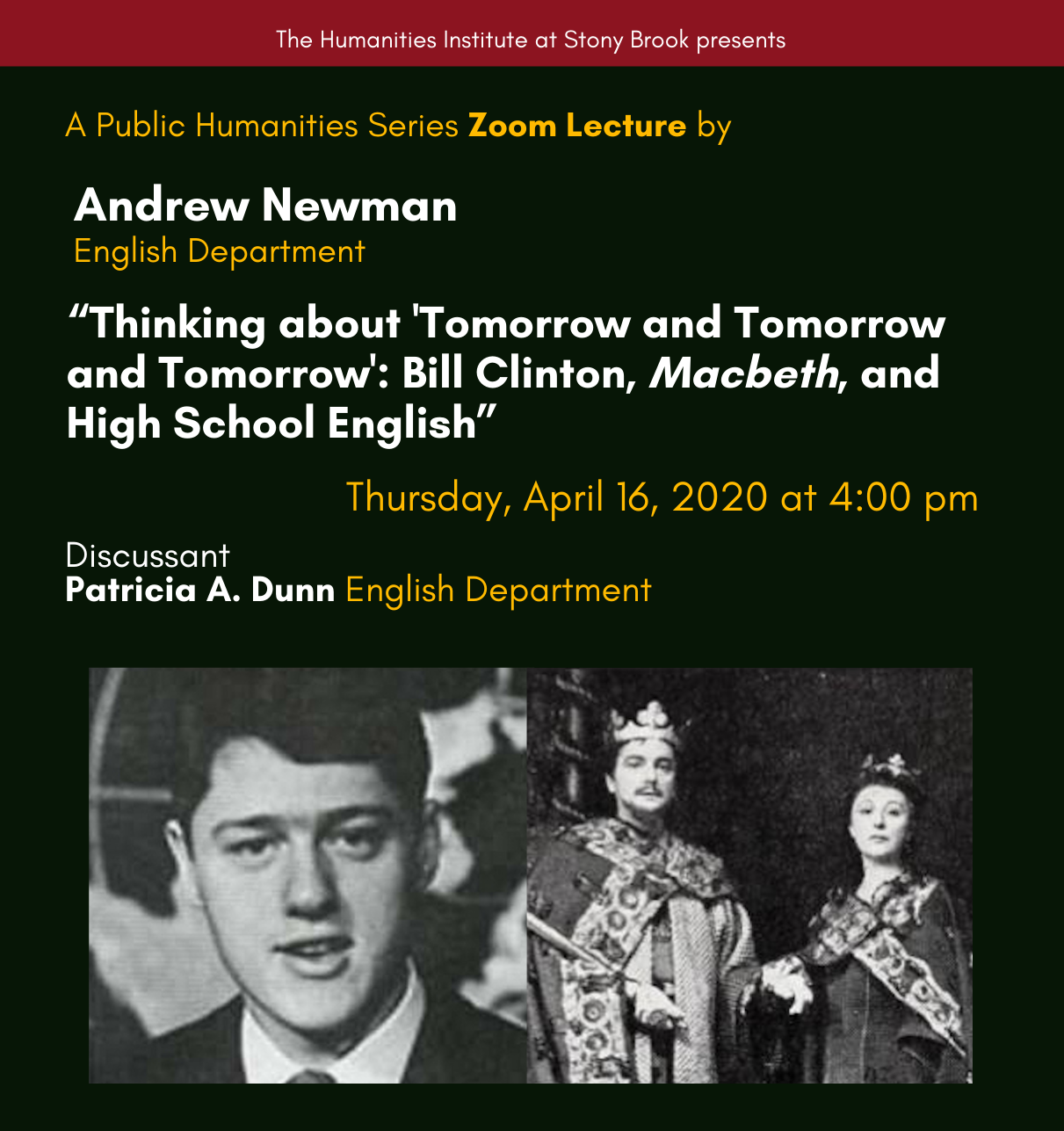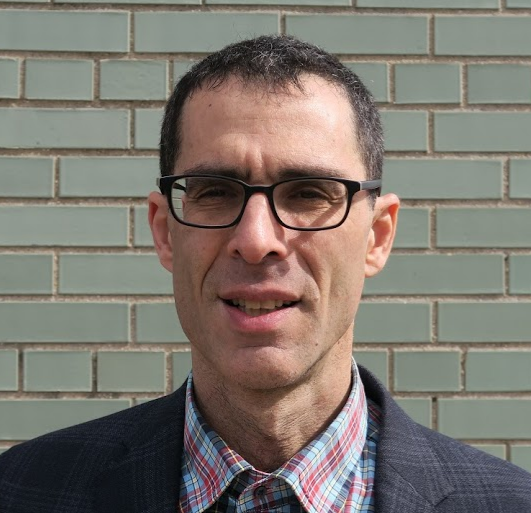Skip Navigation
Search

|
In 1990, then Governor Bill Clinton walked into an English class in rural Arkansas as they were studying Macbeth, and recited a soliloquy from the tragedy that he had memorized during his own senior year. The moment represented a remarkable convergence between literature, politics and the history of education. Details:
Join Zoom Meeting https://stonybrook.zoom.us/j/187403436?pwd=UE1ZRzlDTzNIWDZPdUdkVVFJMkNSdz09 Meeting ID: 187 403 436 Password: 1mE3yOeW |
|
|
Andrew Newman is a Professor of English, affiliated with History, at Stony Brook, and the author
of two books in early American studies. His current research project, supported by
a Guggenheim Fellowship, is a cultural history of literature instruction in American
high schools.
|
| A former high school English teacher, Patricia A. Dunn is a professor in the English department whose areas are the teaching of writing,
rhetoric, disability studies, and young adult literature. Her latest book is Disabling Characters: Representations of Disability in Young Adult Literature (2015). She is currently working on a book through Teachers College Press, Columbia
University, about using student-produced, juxtaposed visual representations as a way
to process abstract concepts. |

